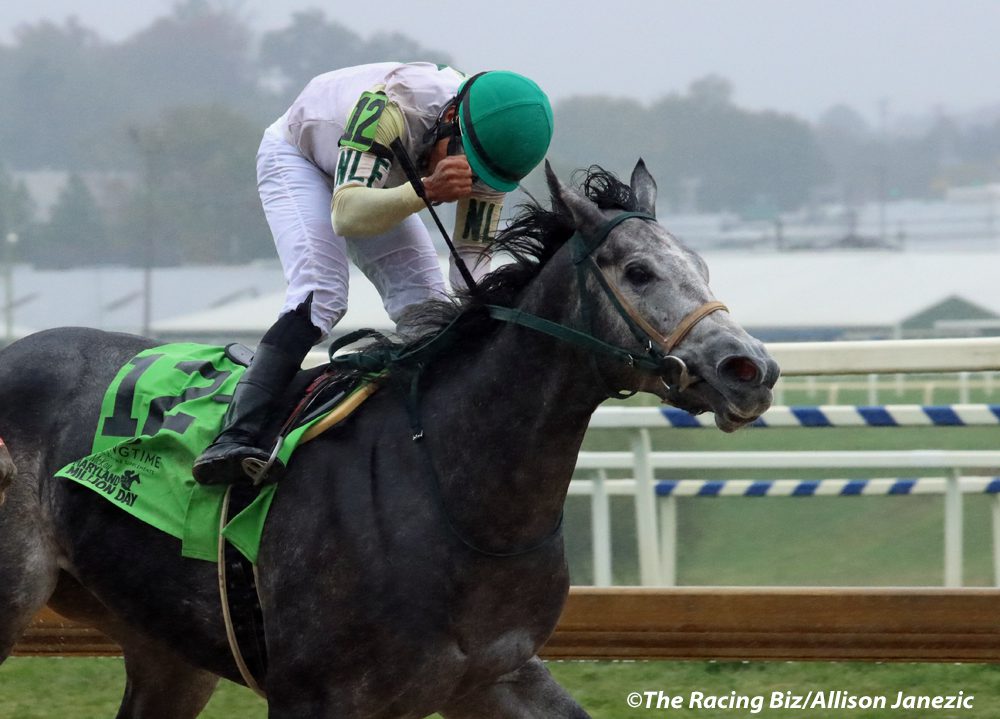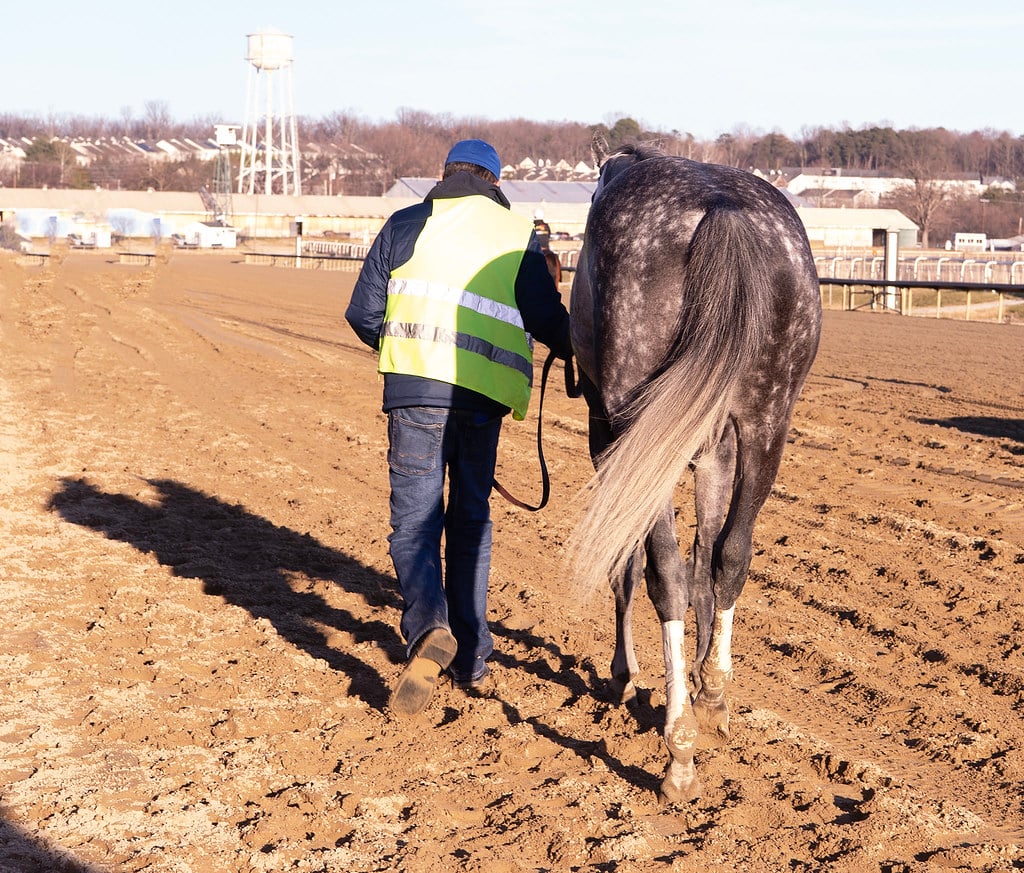EQUINE FATALITY FREQUENCY DECLINED IN 2020

An analysis of data from the 12th year of reporting to the Equine Injury Database (EID) shows a decrease in the rate of fatal injury in 2020 (1.41 per 1,000 starts) compared to 2019 (1.53 per 1,000 starts), The Jockey Club announced March 29.
The 2020 rate of fatal injury is the lowest number since the EID started collecting data in 2009. The risk of fatal injury in 2020 declined 7.8% from 2019 and 29.5% overall since 2009.
- Mid-Atlantic three stars: December 22, 2025
 Your five-minute read to catch up on all the Mid-Atlantic racing action you may have missed over the weekend…
Your five-minute read to catch up on all the Mid-Atlantic racing action you may have missed over the weekend…
Based on the 2020 data, 99.86% of flat racing starts at the racetracks participating in the EID were completed without a fatality.
Statistical Summary from 2009 to 2020
(Thoroughbred Flat Racing Only)
| CalendarYear | 2009 | 2010 | 2011 | 2012 | 2013 | 2014 | 2015 | 2016 | 2017 | 2018 | 2019 | 2020 |
| Rate | 2.00 | 1.88 | 1.88 | 1.92 | 1.90 | 1.89 | 1.62 | 1.54 | 1.61 | 1.68 | 1.53 | 1.41 |
Two-year-olds have consistently been associated with the lowest incidence of racing fatality since the EID began in 2009. In 2020, the incidence for 2-year-olds was 43% higher than in 2019. Three-year-olds and horses 4 years of age and older saw 8% and 14% declines, respectively, in the incidence of racing fatality per 1,000 starts versus 2019. None of the differences in incidence among age groups were statistically significant.
The incidence of fatal racing injury on dirt surfaces in 2020 was the lowest on record at 1.49 per 1,000 starts. Races on the grass were 19% lower in 2020 versus 2019 and the fourth lowest for that surface since 2009. Synthetic once again had the lowest incidence of all racing surfaces at 1.02 racing fatalities per 1,000 starts.
The incidence of fatal injury per 1,000 starts for races shorter than 6 furlongs (1.66) was again greater than other distance categories of 6 furlongs to a mile (1.35) and over a mile (1.22). The incidence of fatal injury for both distance categories in excess of 6 furlongs were the lowest on record in the EID.
“Overall, there was an 8% decrease in the risk of fatal injury from 2019 to 2020. Since 2009, risk has declined by 29.5% (P<0.001) or equivalent to 140 fewer horses sustaining a fatal injury while racing in 2020 than would have occurred had there been no change in risk since 2009,” said Dr. Tim Parkin, the veterinary epidemiologist who has consulted on the EID since its inception. “We will dig deeper into the numbers in the coming months to better understand trends in the 2020 data.”
“Although we are thrilled to see improvement in the numbers from 2020 and commend the racetracks and regulatory authorities in their efforts to reduce injuries, other areas require closer study,” said Kristin Werner, senior counsel and administrator of the EID. “The recording of additional data through tools like the Electronic Treatment Records System and the Management Quality System of the Racing Surfaces Testing Laboratory will give regulators, racetracks, and researchers a better understanding of horse health and racetrack safety, allowing for additional scrutiny and research aimed at preventing injuries.”
Since March 2012, racetracks have been able to voluntarily publish their statistics from the EID on The Jockey Club website. The racetracks that publish their EID statistics reported racing fatalities per 1,000 starts of 1.30 as compared to 1.47 for those that do not publish.
The 21 racetracks accredited by the National Thoroughbred Racing Association Safety and Integrity Alliance reported 1.32 racing fatalities per 1,000 starts versus 1.48 for the 62 non-accredited tracks that raced in 2020 and reported to the EID.
The Jockey Club thanks all participating racetracks for supplying these critical data and continues to encourage the reporting of all injuries and fatalities occurring during racing and during morning training hours. All data entered into the EID goes through a multilevel quality control process to ensure the data is completely and accurately reported.
The EID statistics are based on injuries that resulted in fatalities within 72 hours from the date of the race. The statistics are for official Thoroughbred races only and exclude steeplechase races. Summary statistics for the EID are subject to change due to a number of considerations, including reporting timeliness.
The list of racetracks participating in the EID and detailed statistics from those tracks that voluntarily publish their results can be found at jockeyclub.com/default.asp?section=Advocacy&area=11.
Throughout the course of 2020, approximately 99.7% of all Thoroughbred starts were included in the EID.
The Equine Injury Database, conceived at the Grayson-Jockey Club Research Foundation’s first Welfare and Safety of the Racehorse Summit, was launched by The Jockey Club in July 2008 and seeks to identify the frequencies, types, and outcomes of racing injuries using a standardized format that generates valid statistics, identifies markers for horses at increased risk of injury, and serves as a data source for research directed at improving safety and preventing injuries.
LATEST NEWS
- Mid-Atlantic three stars: December 22, 2025

- Laurel Park picks and ponderings: December 21, 2025

- Post Time heads to retirement with a win

- Slam Notion provides “early Christmas present” in Bender

- Laurel Park picks and ponderings: December 20, 2025

- Brittany Russell brings quartet to Laurel distaff stakes













